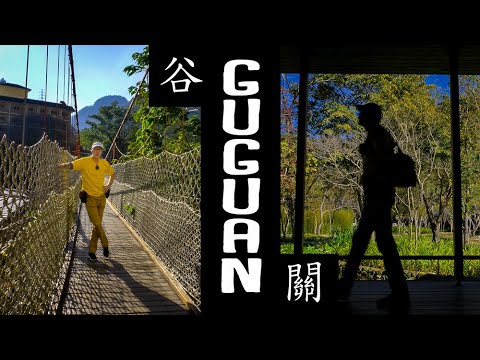Guguan is a well-known hot-spring village in central Taiwan. It sits in a narrow gorge on the banks of Dajia River. We visited the hot-spring park and the upscale Hoshinoya Resort hotel.
WHO WE ARE
We are a small publishing company (Vision) based in Taipei. We produce an English magazine (Travel in Taiwan) introducing readers to Taiwan as a travel destination.
WHO I AM
My name is Johannes (友漢). I love creating videos about places in Taiwan and I try to post a few videos every week (well, more like twice a month). Please let me know what you think about this channel and feel free to ask me any question. Thanks for your support!
Website:
Travel in Taiwan:
Facebook:
Instagram:
Travel in Taiwan magazine (2020/3-4)
Text: Rick Charette
Guguan
Following Provincial Highway 8 from Xinshe up the Dajia River valley brings you in less than an hour to the village of Guguan. In 1907 hot springs were discovered in the area by local natives (the area is home to members of Taiwan’s indigenous Atayal tribe), and Guguan has been a popular recreation area ever since. The sodium bicarbonate hot springs effuse a mildly alkaline, murky-white water that is smooth to the touch, with a strong aroma of sulfur, at an average temperature of 48 degrees Celsius.
Forming the center of the main visitor area is the Guguan Hot Springs Park – a pleasant garden dotted with cherry trees, at the far end of which you can experience a free foot spa (skin-nibbling fish included) at the publicly accessible footbaths.
The park once served as a garden for a Taiwan Power Company employee dormitory (where workers could bed down when posted to this remote area). The dormitory building still exists, but is now home to an iced-desserts shop, its specialty being pine-flavored popsicles, a curious delicacy made by extracting the essence from the needles of Japanese white pines.
At the northwest end of the park, the Shaolai Suspension Bridge (one of three gorge-spanning suspension bridges in Guguan) provides access to the opposite side of the river and the Shaolai Trail, which takes you up through copses of camphor, pine, and cinnamon trees, then down again, emerging at the far end of the village (about one hour). A longer and more challenging hike up Mt. Bojinjia branches off from the Shaolai Trail and is part of the “Seven Heroes of Guguan” – a collection of seven day-hikes in the area.
The eastern end of the village, where many of the hot-spring resort hotels are located, can be reached on foot via the Guguan Suspension Bridge, from which you get a fine view of the hot-spring hotels jostling for position on the steep riverbank.
HOSHINOYA Guguan
While there are plenty of hotels to choose from in Guguan, the HOSHINOYA Guguan certainly stands out among the crowd, both physically (the building towers over the other hotels from a hilltop plateau) and in terms of the level of luxury on offer.
Developed by the resort company Hoshino Resorts Inc. from Japan, the HOSHINOYA Guguan is the company’s first luxury hot-spring resort hotel outside of Japan. The hotel offers 50 spacious and tastefully decorated rooms, most of which are laid out in a maisonette style. All come with a private hot-spring bath with views over Guguan’s wooded mountain scenery.
The hotel’s crowning glory, however, is its water garden – a serene forest grove threaded by a babbling stream – which also contains the hotel pool and several half-hidden gazebos tucked into the pine canopy. And at the far end of the pool you’ll find indoor and outdoor hot springs, designed in a wabi-sabi style that mimics the natural textures of rock and wood, with plenty of private nooks in which self-conscious bathers (like many Japanese baths, no clothing is allowed while bathing) can enjoy some alone time.
Rates begin at NT$18,000 per night.
HOSHINOYA Guguan (虹夕諾雅)
Add: No.16, Wenquan Ln., Sec. 1, Dongguan Rd., Heping Dist., Taichung City
(台中市和平區東關路一段溫泉巷16號)
Tel: (04) 2595-0008
Website:


AloJapan.com